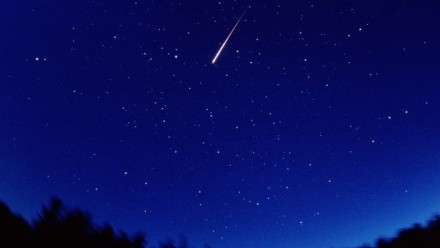
(PHOTO/BBC News)
Howdy Habersham!
Every August the Earth plows through the debris stream of a comet called “109P/Swift-Tuttle.” As the debris stream impacts the atmosphere, the tiny pieces of comet burn up producing the yearly Perseid Meteor Shower. Swift-Tuttle is a fairly large comet with a large debris field, which has helped the Perseids to persist for at least the past 150 years, though possibly much longer as there are Chinese records as far back as 36AD.
This is one of the best meteor showers of the year due to it’s timing during the warm summer nights of August and the number of meteors.
In addition to fairly high meteor rates, the Perseids are known for producing by far the most “fireball” meteors. These meteors are visible even from beneath the glow of city lights, but still only make up a fraction of the total number. NASA even monitors these fireballs from a site here in North Georgia at the University of North Georgia’s Astrnomical Observatory!
Good weather and no moon will make this year’s shower particularly nice. I’ve got the important information below.
WHEN? This years shower is predicted to peak on the morning of August 13th, though both Tuesday and Thursday nights will provide a decent time to watch as well. While Perseids are visible any time of night, the best time to watch will be after 10PM and through dawn.
WHERE? While you will be able to see Perseids from just about anywhere, the best places will obviously be open fields away from city lights where you can get a wide view with minimal light pollution. If you have the ability, a drive to the NW shores of Lake Burton should offer excellent viewing conditions away from any street/boat lights. If you have time, a drive towards the higher elevations around Brasstown Bald would offer excellent dark skies as well. The best part about this shower, though, is that no travel is necessary to view it. Just go outside, lay back, let your eyes adjust to the darkness and enjoy!
The meteors will be visible anywhere in the sky, but if you trace each meteor’s track backwards they will all appear to be coming from the constellation “Persus”, located in the NE sky and rising around midnight. This constellation is located just below the more well-known constellation Cassiopeia which appears as a “W” in the NE sky.
HOW MANY: At peak, the rates could reach 50-100 meteors per hour, easily rivaling the December Geminids (I saw over 300 in 6 hours this past December). In the darkest skies over 100 meteors/hour are possible. Some forecasts have shown that this years shower could be particularly impressive due to a thicker stream of debris, but we won’t know for sure until we encounter it.
So… grab a blanket and head out to enjoy what will likely be the best meteor display of the year!~TW








